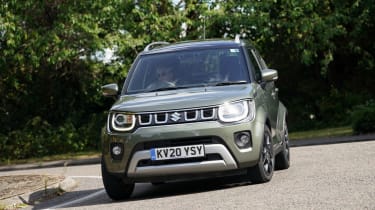Suzuki Ignis review - MPG, CO2 and running costs
The Ignis should be very cheap to buy and run regardless of spec, although insurance groups aren’t all that low

The Ignis shares the familiar Suzuki family trait of being good value for money. And even looking past the attractive list prices, it should prove cheap to run. The entry SZ3 manual model is capable of up to 58.0mpg on the WLTP combined cycle, while opting for the CVT automatic still sees fuel economy of over 52mpg. The top-spec SZ5 (five-speed manual) version returns 52.4mpg.
These figures should be achievable in real world driving - when we tried the previous 1.2-litre, non-hybrid variant we found it easy to exceed 50mpg under normal, everyday conditions.
CO2 emissions are decent, too, starting at 110g/km for the entry SZ3 model, through to 122g/km if you choose a CVT auto version. Another bonus is that repair bills for the Ignis are likely to be roughly in line with the rest of the Suzuki range – and not very expensive.
Insurance Groups
For a small, low cost city car, the Ignis isn’t all that cheap to insure. One factor to blame on that is the three-star Euro NCAP safety rating (rising to five stars for models with the enhanced safety pack). Insurance groups start from group 15, rising to group 21 for the SZ-T manual version.
In comparison, the Dacia Duster is in group 13, while a 99bhp Kia Picanto in top-spec GT-Line S trim is in group 11.
Depreciation
Residual values for the Ignis are competitive compared to rivals in the city car class. After an average ownership period of three-years and 36,000-miles, it should hold onto around 51 per cent of its original value, whereas a Kia Picanto can only manage around 46 per cent. The Hyundai i10 is slightly ahead with around 54 per cent of its original list price retained after 36-months of motoring.









